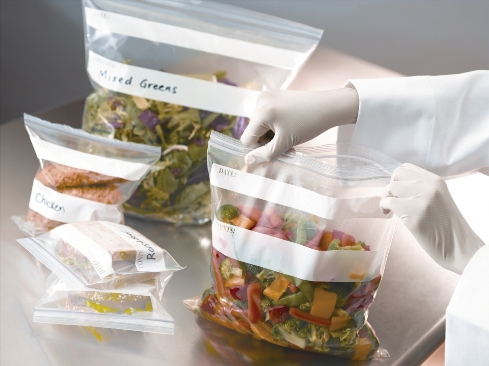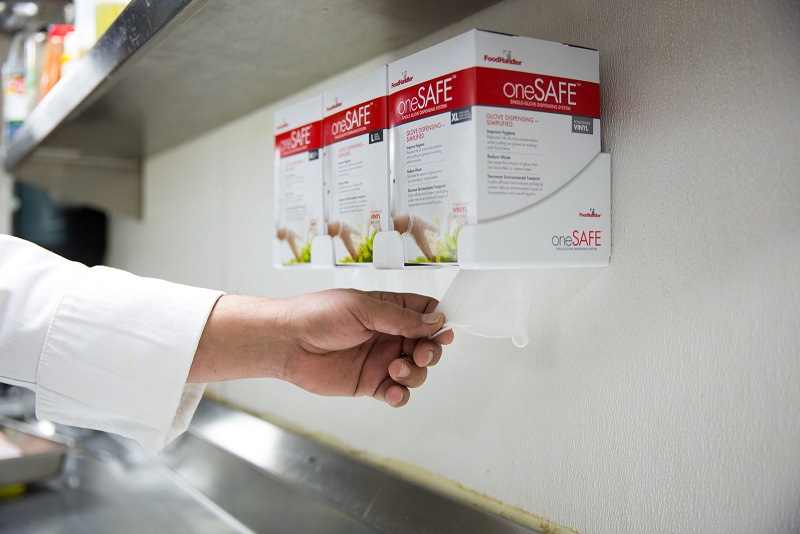Turn your Health Inspector into your Food Safety Ally
For many foodservice operators, keeping up with evolving regulations can feel like chasing a moving target. According to Datassential’s 2025 Midyear Trends Preview Report, more than half of operators (53%) say new food safety regulations are often difficult to understand and implement. That number reflects a reality most in the industry know well: regulations are essential, but they can be complex, time-consuming, and sometimes confusing.
On top of that, most operators agree that managing food safety and maintaining compliance are not only important but also challenging. Between balancing labor shortages, inflationary costs, and escalating consumer demands for speed and innovation, food safety may not always get the time and attention it deserves.
The truth is that food safety should be a constant priority in your operation. I was reminded of this during our late-August food safety inspection for our campus dining operation, which we run as part of a class. Overall, the inspection went well, but it also reinforced the importance of using your health inspector as a resource. As instructors, we were juggling the start of a new semester and preparing for students to flood through the doors. Amid that chaos, it would have been easy to let our food safety plan and procedures slip into the background.
In years past, the inspector was viewed more as an antagonist than an ally. Inspectors themselves have tried to change that perception in the last decade or more. Our interactions with our inspector when they arrived at our facility helped to remind me of this. I believe that inspectors are one of the most underutilized resources available to every operator.
It’s easy to see health inspectors as adversaries; they show up unannounced with their clipboards, or more commonly now, their iPad in hand, ready to cast judgment. And of course, they are there to look for things you and your employees have done wrong. But inspectors aren’t just there to catch problems. At their core, inspectors are public health professionals, trained to help protect communities and prevent foodborne illness. When operators start to view them as partners rather than obstacles, the relationship can shift. Your inspector can become a trusted advisor who helps you navigate regulations, identify risks before they become violations, and build a stronger food safety culture within your business.
With 53% of operators noting regulations are hard to understand, inspectors can help translate that code language into practical advice for you and your employees. If you’re unclear about a new requirement, reach out and ask your inspector for clarification. Engage them in dialogue now so you have a better, more trusting relationship when it comes time for your next inspection.
Regulations are written broadly, but every operation is unique. Whether you run a high-volume quick-service restaurant, a grocery deli, or a school foodservice, inspectors can help tailor compliance strategies to your operation.
Instead of waiting for a formal inspection to identify problems, schedule a consultation or ask questions during routine visits. Many inspectors are happy to point out potential issues and suggest fixes before they become violations that affect your record.
…When inspectors see operators taking initiative, asking questions, and striving for improvement, it sets a positive tone…
This trust can make future inspections smoother and may even create some flexibility when minor issues arise.
If you’re ready to turn your inspector into an ally, here are a few practical steps:
- Shift Your Mindset: Instead of dreading inspections, view them as an opportunity to learn and improve.
- Ask Questions: Don’t be afraid to ask why a regulation exists or how you can best apply it in your operation. Curiosity demonstrates engagement.
- Request Resources: Many health departments provide handouts, checklists, or sample policies you can adapt for your operation.
- Be transparent: If you’re struggling with a requirement, say so. Inspectors appreciate honesty and are more likely to work with you toward a solution.
- Follow Up: If your inspector suggests changes, implement them quickly and share your progress. This shows commitment to food safety.
Foodborne illness outbreaks can devastate a business, not just financially but reputationally. While compliance may feel like another box to check, strong food safety practices protect both your guests and your brand. By using your health inspector as a resource, you gain an extra set of eyes, a deeper understanding of the rules, and a partner in keeping your operation safe.
From an operator’s perspective, commercial refrigerators were more reliably able to maintain 41°F than exactly 40°F. Thus, it is easier for facilities to consistently meet and monitor 41°F. Similarly, hot-holding equipment like steam tables often stabilizes at a holding temperature of 135°F, whereas 140°F is more difficult to achieve.
Thus, the adjustment to the TDA we know today was made because of increased knowledge of pathogen growth, while trying to make the code more practical for foodservice operators to comply with, while not compromising public health.
Understanding and respecting the TDZ is one of the most important responsibilities in foodservice. Make temperature control a daily habit, build a culture of food safety, and invest in the right tools and training to ensure that your operation stays safe, compliant, and trusted. Risk Nothing.
READ MORE POSTS
Food Packaging Safety in a Vacuum
Extending the shelf life of fresh foods has come a long way in the food industry since curing meats with salt and sugar or canning vegetables with heat processing. The food service and consumer markets needed some better visual packages to draw the eye to the freshness factor and the technology of food packaging has filled our dinner plate. Vacuum packaging and modified atmosphere packaging, shortened to “MAP”, are the terms used for the method of food packaging used every time we choose convenience over more complex scratch meal preparation. According to industry statistics, billions of packages of vacuum and MAP-packaged foods flood the marketplace today. In both modified-atmosphere and vacuum packaging, food is packaged in a pouch made of barrier film.
The Eleven Commandments of Food Safety at Your Restaurant
Lists help us remember all kinds of information. Given the list of recent national foodborne outbreaks in the news, keep repeating this list to your food service team. They are kind of like “commandments”. As a professional in a food service facility we should think of the very basic food safety concepts that every crew member should aspire to learn, even though this list may have different priorities based on your menu. The first 3 apply to anyone who serves food, from a bag of popcorn to a full course meal. As chefs or managers, if we can “set the example” by repeating good food safety practices visibly to the crew, it will help them understand how important it is to the success of your facility. Thou shalt:
The Worst Customer Complaint: Foodborne Illness
Food service managers and crew try to follow the rules of food protection. Yet, occasionally a complaint may arise and these calls take priority over all other daily crises. If you have been in the food service industry long enough, you may have gotten one of these. A customer may claim, "I think your food made me ill." These words inflict instant anxiety. If it happens, here are some next steps to think about in advance of such a claim:
How Effective is Your Food Safety Training?
Basic food safety in a restaurant kitchen is not rocket science, but critically important for the crew to take the time to learn about it and for managers to set the example each day. Customers never expect or want to see a manager, chef, or a crew member make a very visible food safety mistake, like not washing hands before food prep and gloving, or touching their face or hair while prepping or handling food. Have we all seen it happen in our restaurant or as a customer elsewhere? Certainly. Are you using some creativity in your current training methods to help your staff “get it” so to speak, and reflect positive behaviors regarding food safety?










